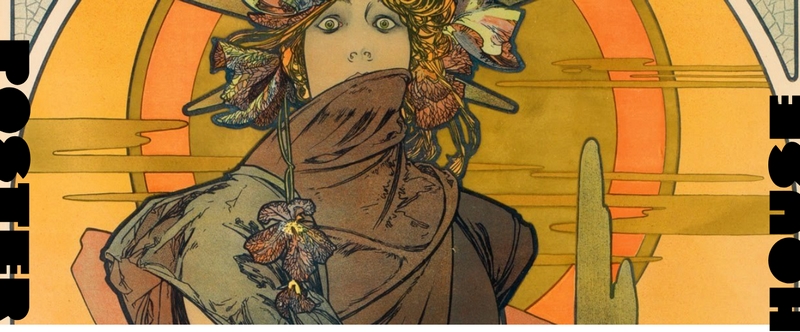
poster house new york; @posterhouse.org
New York has long been known for its street art – whether it was Keith Haring’s political graffiti in the 1980s or, more recently, guerrilla posters tracing racist incidents at each subway stop, the city could be viewed as a polluted open-air museum.
But now, it is time for some of the city’s best posters, and more, to become part of art history. A collection of 7,000 posters from across the globe will be going into the Poster House, the country’s first graphic design museum devoted entirely to the art of the paste-up, opening on 20 June.
“There isn’t a poster museum in New York City or anywhere in the US,” said Julia Knight, the museum’s director. “Posters are for everybody, they’re on the street, that seemed to be missing from New York.”
A poster museum is not unlike a graffiti museum – why pay the entrance fee when some of the best posters are out on the streets? Especially since we live in an era with a nationwide resistance billboard project, what’s the point of a poster museum?
“We wanted to cover posters from all over the world and time periods,” said Knight. “Design museums feature posters, but they’re used as supplemental materials. Here, posters are a focal point and not an accessory.”
On a recent afternoon, their new space was in full construction mode. Dozens of construction workers buzzed away in this new 15,000 sq ft space designed by LTL Architects (this very same storefront was formerly a computer repair shop), steps away from Madison Square Park.
The curator, Angelina Lippert, claims posters are a product of the industrial revolution, have been a tool for Russian propaganda, traced immigration in America and are a grassroots force that speaks to everyone.

The opening exhibition features a selection of more than 80 posters by the art nouveau designer Alphonse Mucha, a 19th-century graphic designer who defined the city’s romantic aesthetic. Everyone who has a fantasy of Paris today – ignoring the ongoing Yellow Vest protests and the recent Notre Dame fire – will certainly conjure up images of Mucha’s work.
“We chose Mucha because it’s something familiar to a lot of people, even if you don’t know the name, you know it,” said Lippert. “His work hasn’t been featured in New York since 1923.”
This exhibition features posters Mucha, known as the king of Parisian pastels, designed for French actor Sarah Bernhardt (not to be confused with the comedian Sandra Bernhard), who first hired Mucha to promote her Paris theatre piece Gismonda in 1894.
“Le style Mucha became synonymous with art nouveau,” said Lippert. “Sarah Bernhardt launched his career and ultimately, it changed the way women were used in advertising.”
It was an enormous hit, not only for the theater, but in revolutionizing poster design (partly because Mucha had little experience and had the freedom to do whatever he wanted).

Mucha then designed Bernhardt’s stage costumes, jewelry and posters for all her shows, including Médée in 1898 and Hamlet in 1899, giving her a whimsical, goddess-like quality that matched her reputation in showbiz. He designed all the posters for her tours through America, which led him to having a career in the States in the early 1900s.
Alongside the Mucha exhibit, there’s a smaller selection of posters by the German design firm Cyan, which rose to prominence in Berlin in the 1990s after the fall of the Berlin Wall in 1989 (the designers got their first computer smuggled across the East German border before the wall fell).
“It focuses on posters from the 1990s, right when desktop publishing first happened,” said Lippert. “It shows what it meant and what posters could do then.”
The group, still active today, did much of the design for the Bauhaus design school in Dessau (the Bauhaus celebrates their 100th anniversary in 2019). The work on view here is from 1992 to 1997 and marks their first exhibition of their work in the US.
“They were using Photoshop and Quark Express before anyone was using them,” said Lippert. “They were one of the first to experiment with these computer programs.”
The Poster House plans on featuring one non-western exhibit annually, as well as one female-focused exhibition a year (this fall, they’re featuring posters from the Women’s March).
“If you look at history, major events that shaped the world, it’s top down, but if you’re looking at history of posters, you’re looking at history bottom up,” said Lippert. “There’s a series of small things that changed people’s lives on an intimate level. That’s important for us to focus on.”
guardian.co.uk © Guardian News & Media Limited 2010
Published via the Guardian News Feed plugin for WordPress.

